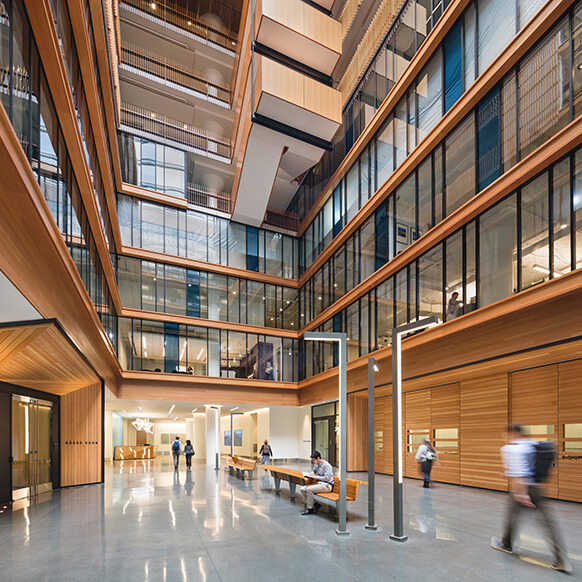As our firm’s Research Knowledge Manager, I am always seeking to learn more about how to prepare for a resilient future. I recently attended a workshop at the Bay Area Metro Center on resilient design, broadly defined as the intentional design of buildings and communities for survival, recovery, and stability in the face of climate change. The conference room brimmed with concerned citizens, civil servants, finance experts and urbanists eager to learn about the intersection of resilience and finance. Crowding around a table, I became acutely aware of the charge in the air. Attendees were hungry for resources, partnerships, and knowledge. At a quick glance, the workshop educated participants about how to fund resilient design. But upon deeper reflection, it also revealed a growing movement that champions interdisciplinary actions and rewards diverse project teams.
This gathering offered an opportunity to check in and understand the current baseline, and also explored how the design community can contribute to this global movement. While discussion focused on specific California projects and funding sources, the lessons showcased universal applicability. With extreme events on the rise and as we barrel toward a “Hothouse Earth“, more money is being allocated for disaster mitigation and adaptation efforts. From Federal resources like HUD’s recent grant announcement of $28 billion to support long-term disaster recovery in nine states, Puerto Rico, and the U.S. Virgin Islands, to state and regional efforts like California’s Prop 68 and the Bay Area’s Regional Measure 3, a large pool of public money is becoming available to help fund resilience efforts. This is further supplemented by the burgeoning number of private financing mechanisms.
The workshop reinforced the idea that funding exists, but participants also learned that gaining access may be shrouded in complex bureaucracy and policy. To distill the simple from the complex, Shalini Vajjhala of re:focus partners offered this salient advice: “Ask who loses money or who is impacted if the project does not happen.”
She also suggested that design teams should look for beneficiaries that double as a funding source, which has the added bonus of initiating nontraditional business relationships. I viewed this as encouragement to connect the dots, even when the dots live on different geometric planes.
Resilient design, much like all projects in the built environment, requires funding. Furthermore, it uniquely demands collaborative relationships and cutting-edge research, something the Perkins&Will community is well-equipped to tackle. Last fall, the RELi project rating system was adopted by the USGBC as their official resilient design standard. Perkins&Will was integral to creating this system and, not coincidentally, Perkins&Will is home to the world’s first RELi Accredited Professionals. RELi emboldens design teams to take a panoramic approach, consider risk adaptation and hazard preparedness, and design for community cohesion. As such, our designers proactively approach project discussions from a holistic framework that seeks to integrate expertise from many perspectives.
Complementary to this holistic design approach is our mission of shaping practice-informed research for a research-informed practice. Our nine research labs examine a broad spectrum of topics related to the built environment, from how humans experience their surroundings to the future of urban mobility to the latest advances in building technology. With research and curiosity already being a part of Perkins&Will’s DNA, we’re even better positioned to “connect the dots” for resilient design projects. I left the Bay Area Metro Center that day imbued with both urgency and relief that we’ve already joined the movement.
For more information on ongoing research at Perkins&Will, please visit research.perkinswill.com.
